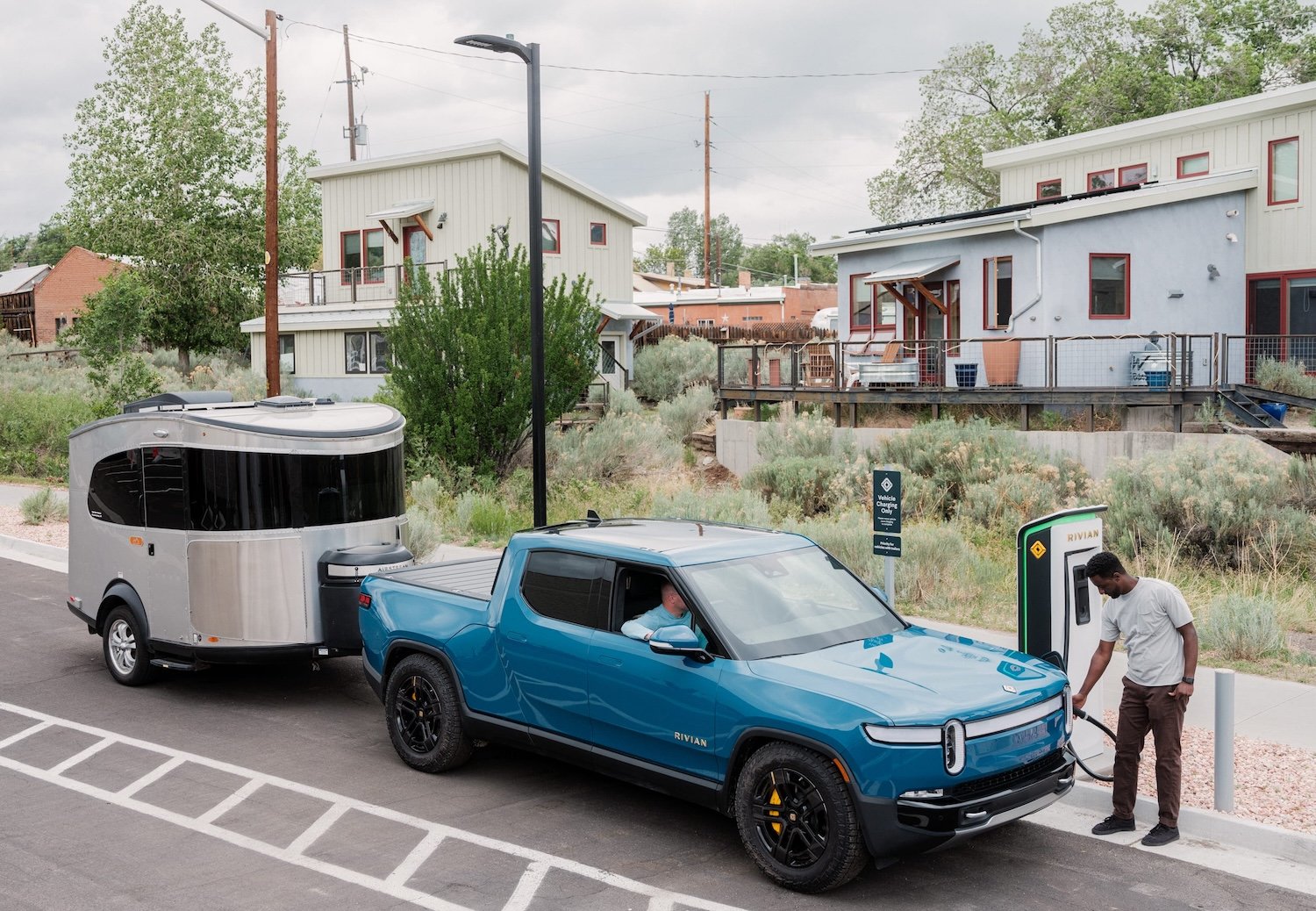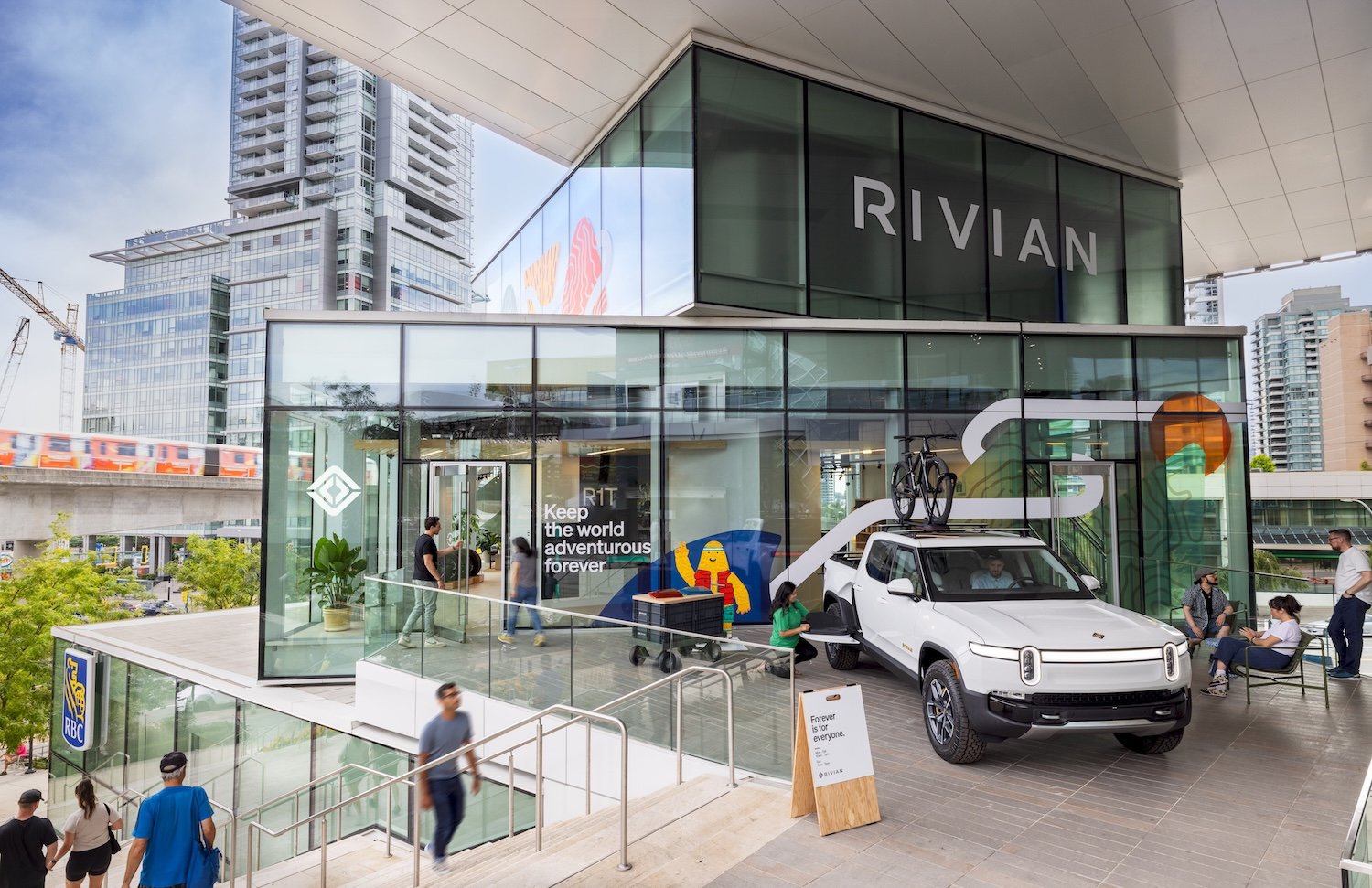The ugly truth in the electric vehicle (EV) industry right now is that many investors are skittish. For many EV start-ups, the fear of a cash crunch and of increasing competition hurting sales is very real.
That means any development that has a potential to be a red flag is put under the microscope, including Rivian's (RIVN +7.15%) recent move to sell vehicles right outside its factory in Normal, Illinois. Rivian has many things going for it as a long-term investment, but was the company's recent move for sales innovative, or a sign of desperation?
Buying at the factory?
Rivian tested out an unusual -- and that's probably not a strong enough word -- move by selling excess inventory of vehicles just outside its factory this past Saturday. The move gave customers a way to browse multiple versions and options of its R1T electric pickup truck, take them for a test drive, and potentially order a vehicle for delivery or drive away with the new car smell that day.
While it was only a one-day event, it's a nearly unheard-of move in the automotive industry, which traditionally relies on dealerships to distribute its vehicles to consumers. Rivian isn't traditional, though, as the company has largely relied on its online and direct-to-consumer method.
But this unusual move raises a serious question for investors. Does it mean demand is slowing more than concerned investors considered?

NASDAQ: RIVN
Key Data Points
Red flag?
While it will take time to fully answer that question, what we do know is that Rivian has gone from having a backlog of orders to having an excess of electric truck inventory. Isn't that a red flag? Not necessarily, because Rivian's electric SUV, the R1S, accounts for roughly 70% of the automaker's preorders.
Rivian is indeed trying to move its excess R1T inventory, but it could actually use more R1S production to fill preorders. Fortunately, the R1S is expected to overtake the R1T in production volume this quarter.
The EV maker had a slow start to the year, producing only 9,395 vehicles and delivering just under 8,000 during the first quarter. That was primarily due to its adjusting production lines to reduce bottlenecks in R1S production.
Management confirmed it will still make its production goal of 50,000 units in total during 2023. That level of capacity will be important to fulfilling preorders of the R1S and generating revenue.
The big picture
Ultimately, it's understandable if Rivian's unusual move to push inventory to consumers at its factory caused investors to raise their eyebrows. However, the story for investors really remains around the production acceleration of the R1S and reaching a total of 50,000 in production for 2023 -- roughly double the previous year.
Further, don't let this unusual selling strategy take away from other recent news that is also a huge plus for investors. Rivian announced it had reached an agreement with Tesla to access the Supercharger network, starting next year. The agreement appears to be similar to the ones that automaker giants Ford and General Motors made with Tesla last month.
Right now Rivian's charging network is still small -- although it has big plans to build this out, unless the agreement with Tesla changes its strategy -- and Tesla's network is the biggest fast-charging network in the U.S. and has been rated as the most reliable by many studies.
The bottom line is that this unusual move from Rivian isn't a sign of complete desperation, and it's not a massive red flag. Rivian has a $12 billion mountain of cash -- even if it is burning through it quickly -- quality vehicles, a deal that enables its customers to hook up to Tesla's charging network, and plans for a new, smaller, and more affordable R2 SUV and truck models in 2026.
Rivian will undoubtedly face challenges, but selling excess R1Ts outside its factory for one day isn't a sign of desperation.





